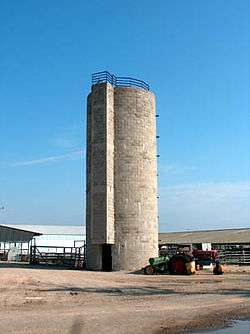Kvutzat Yavne
| Kvutzat Yavne קְבוּצַת יַבְנֶה | |
|---|---|
 | |
 Kvutzat Yavne | |
| Coordinates: 31°48′55.08″N 34°43′13.43″E / 31.8153000°N 34.7203972°ECoordinates: 31°48′55.08″N 34°43′13.43″E / 31.8153000°N 34.7203972°E | |
| District | Central |
| Council | Hevel Yavne |
| Affiliation | Religious Kibbutz Movement |
| Founded | 1941 |
| Founded by | German immigrants |
| Population (2015) | 946[1] |
| Website | www.yavnet.org.il |
Kvutzat Yavne (Hebrew: קְבוּצַת יַבְנֶה) is a religious kibbutz in the Central District of Israel. Located in the coastal plain just east of Ashdod, it falls under the jurisdiction of Hevel Yavne Regional Council. In 2015 it had a population of 946.
History
The idea of Kvutzat Yavne was conceived in Germany. The intention of the founders was to make the area near ancient Yavne (from which it takes its name) the site of a religious kibbutz and a yeshiva. These founders, members of the Religious Zionist movement, began to prepare themselves for agricultural work on German farms in 1929. Shortly thereafter, they immigrated to Mandate Palestine. They initially settled near Petah Tikva on land purchased by a Jewish-owned German company. Finally, in 1941, the 180-person group of German Zionists, began to build Kvutzat Yavne at its intended location. The kibbutz continued to grow, joined by German, American, and Sabras. It came to be known as the cradle of the Religious Kibbutz Movement, with which the kibbutz is associated.
Economy
Most of Yavne's agricultural production is in field crops, fruit orchards, poultry, and dairy, all contained within approximately 1,500 acres (6.1 km2) of land. Major industry located on the kibbutz includes olive and cucumber processing plants, the Adi watch factory,[2] and the largest chicken hatchery in the country (dispatching 600,000 chicks per day). It is also the location of Yeshivat Kerem B'Yavneh, the first Hesder Yeshiva. The kibbutz used to run a Jewish studies program preparing candidates for conversion to Judaism, but this is no longer available. There was also an Hebrew ulpan for both Jewish students and Gerim.[3]
References
- ↑ "List of localities, in Alphabetical order" (PDF). Israel Central Bureau of Statistics. Retrieved 16 October 2016.
- ↑ Adi watch factory
- ↑ Conversion ulpan
External links
- Official website (Hebrew)